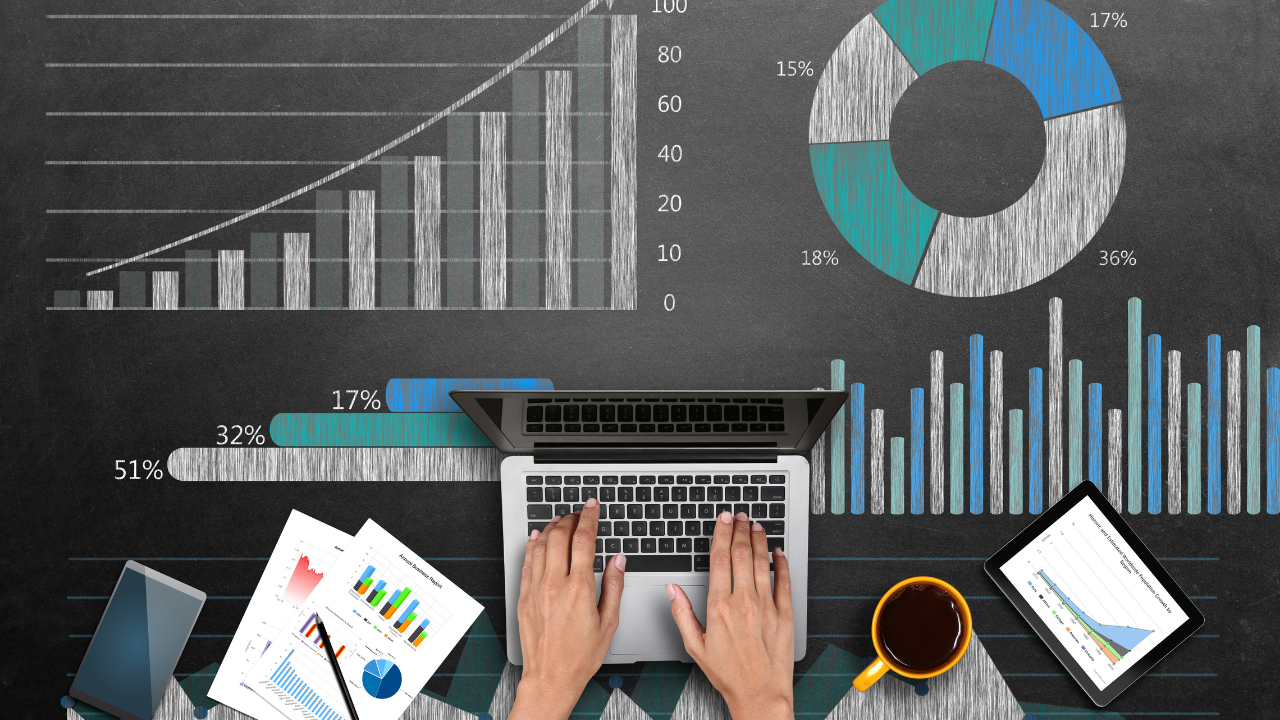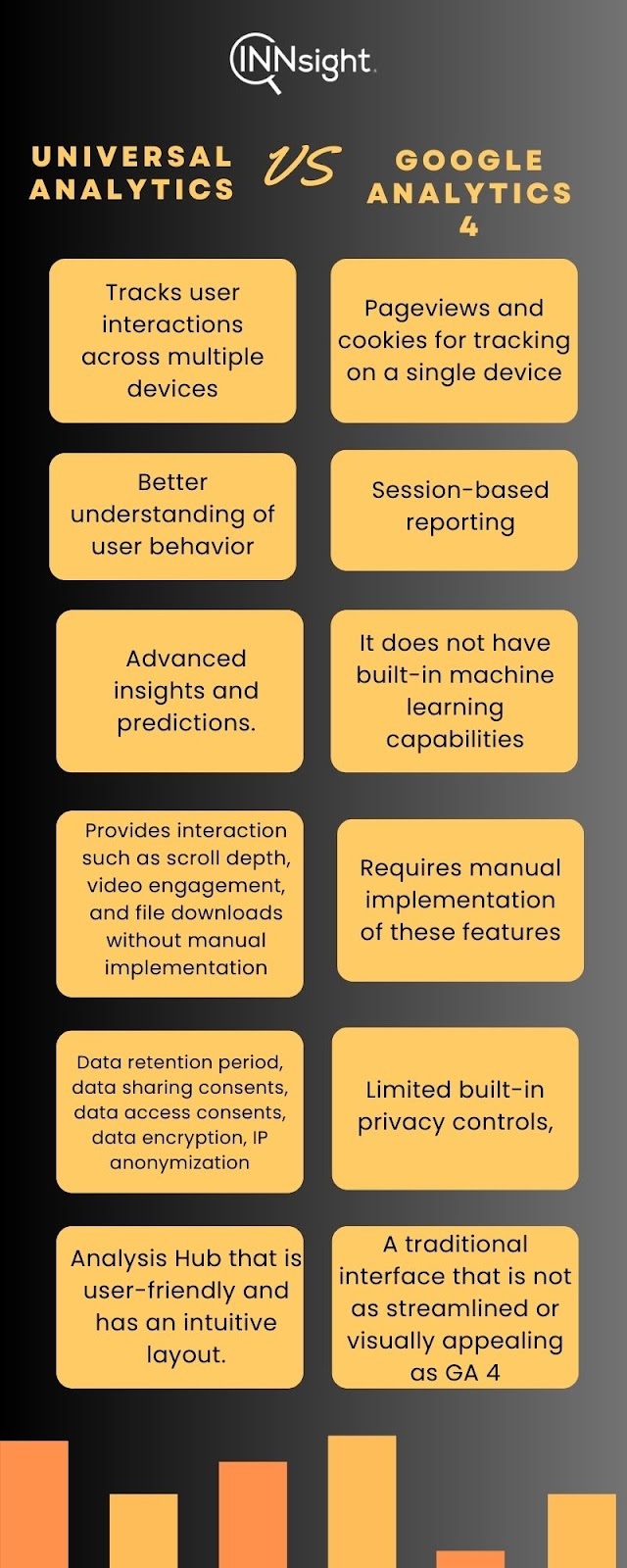Summary
Data is essential for effective marketing and business growth. Data collection and analysis are revolutionized by Google Analytics 4 (GA4). It provides sophisticated perceptions of platform-agnostic user behavior. GA4 provides user lifecycle reporting, cross-platform monitoring, machine learning, increased measurement, event-driven tracking, data control, and customized reports. In terms of functionality and securing data plans for the future, it beats Universal Analytics.
Data is the lifeline of today's digital landscape, fuelling successful marketing tactics and driving corporate growth.
Understanding user behavior, spotting trends, and making informed decisions is becoming increasingly crucial for businesses of all sizes. That's when GA4 enters the picture, ready to change how we collect and analyze data.
In this blog, we will cover the fantastic features of Google Analytics 4 and how it enables organizations to realize the total value of their data.
Whether you're an experienced marketer or just starting, GA4 will change how you track and understand user interactions across many platforms.
What is Google Analytics 4?
Google Analytics 4 is the most recent version of Google's renowned web analytics software. It is intended to deliver more advanced and in-depth insights into user behavior across different platforms and devices.
Compared to its previous version, Universal Analytics, GA4 adds several major features and upgrades.
Google Analytics 4 is a huge improvement from Universal Analytics. While Universal Analytics is still working, it is suggested that you migrate to GA4 to take advantage of the most recent capabilities and future-proof your data strategy.
Features of Google Analytics 4
1. Event-Driven Data Model
Events are the actions users take on the website, such as clicking on a button, watching a video, or downloading a file. Google Analytics 4 tracks these events more precisely than Universal Analytics.

You can also use events to track system behavior, including app crashes or the serving of impressions. You can track exact user behaviors like button clicks, video views, and file downloads.
Based on real-time event tracking, this data-driven method helps optimize user experiences and personalize marketing campaigns.
2. Enhanced Measurement Capabilities
Google Analytics 4 has made it easy to gain more comprehensive insights into user behavior, engagement, and content interactions, and you do not need to implement tracking manually.
The measurement capabilities are built-in features that automatically track user interactions such as page scrolls, video engagement, file clicks, outbound clicks, and site searches without additional customization.
Here are some measurement capabilities of Google Analytics 4:
- How far do users scroll on a page
- The video starts, pauses, resumes, and completions
- Clicks on file download
- Button clicks
- The types of files being downloaded
- External link clicks
- Search queries, search refinements, and search results

What if the website owner has multiple domains? GA4 has made it easy to measure across multiple domains.
When a user clicks on an outbound link that leads to the domain that you list as a part of cross-domain measurement will not trigger another event, as it would initially do!
So, GA4 doesn't count that click as a separate event because it knows you haven't left the platform.
With the help of cross-domain measurement, activity may be precisely linked to a single user as they move between domains.
4. Machine Learning

It is one of the great features of Google Analytics 4! It learns and observes user behavior patterns such as how people use websites or apps.
It analyzes the user behavior and makes predictions about the same such as which pages they will visit next, what they will buy, and so on!
Machine learning is a powerful tool that enables businesses to understand their users better and get better insights.
5. User Lifecycle Reporting
There are three stages of user interaction on a website or an app. Those are- acquisition, engagement, and retention.
When a user visits a website or app and starts using it, it's an acquisition stage. When they buy a product or service, it's an engagement stage. When a user keeps using services repeatedly, it's a retention stage.
Google Analytics 4’s User Lifecycle reporting tracks user behaviors at all these stages. It provides valuable metrics like user sessions, conversions, event triggers, etc.
This reporting helps businesses understand what their users like and dislike, what makes them retain, and what makes them use a particular website repeatedly.
6. Data Control and Privacy

Data control and privacy are the two pillars of Google Analytics 4. Google has implemented strict measures to secure and control users’ personal data.
GA4 provides options to its users about data retention periods and lets them customize data-sharing settings. This means users can decide how much time they want to hold the data and who they share it with while following privacy guidelines.
Essential features include IP anonymization, data encryption, access controls, consent controls, etc.
This results in partially masking IP addresses so no one can fully identify the user. Businesses need to take explicit control before acquiring any user data and no one can access this data in an unauthorized way.
Google Analytics 4 balances providing precise insights to businesses about users while respecting privacy! It guarantees that user data is handled sensibly, and securely, and complies with privacy regulations.
7. Custom Reports and Analysis

Google Analytics 4 gives liberty to businesses to customize their reports based on the metrics best suitable to them.
It allows users to go beyond the default reports and explore data the way they want.
Users can select different metrics (such as page views, conversions, or revenue) and dimensions (such as traffic source, device, or user demographics) to understand the website or app performance in a better way.
Users can narrow down these metrics and dimensions to get a particular report, for example, they can check how well their ad campaign is working or geographical/gender-based/age-based traffic, and so on.
GA4 also offers different analysis capabilities, such as exploration, funnel, and cohort analyses. With the help of these methods, users may delve deeper into data trends, spot patterns, and comprehend user behavior across the course of the customer journey.
Businesses may discover novel insights, make data-driven decisions, and optimize their marketing campaigns thanks to custom reports and analyses.
Differences between Google Analytics 4 and Universal Analytics

Conclusion
GA4 is a revolutionary advancement in data analytics. Advanced user behavior insights, improved measurement capabilities, cross-platform tracking, machine learning, user-centric reporting, and robust data control and privacy features are all offered to enterprises.
Businesses may utilize GA4 to optimize marketing campaigns, make data-driven choices, and better understand their people. GA4 offers a complete array of tools to track and analyze user interactions across many platforms, regardless of your level of marketing expertise.
The secret to unlocking your data's value and maintaining an edge in the digital world is embracing GA4!









 Related Blogs
Related Blogs
.png)

